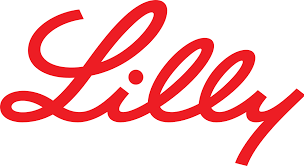礼来公司 (LLY.US) 2025年第二季度业绩电话会
文章语言:
简
繁
EN
Share
Minutes
原文
会议摘要
Eli Lilly reported a 38% revenue growth in Q2 2025, driven by key products and acquisitions, achieving $6.31 EPS. Highlights include positive phase 3 data for orforglipon, market leadership in diabetes and weight management with Manjaro, and strategic expansions through Site 1 and Verve Therapeutics acquisitions. Challenges include navigating U.S. market inefficiencies and Cvs policy impacts, with a focus on global pricing rebalancing and healthcare access improvements.
会议速览
At this meeting, the company announced its financial performance for the second quarter of 2025 and conducted forward-looking discussions, emphasizing various factors that may affect actual results in the future. During the meeting, the speaker reiterated the focus on non-GAAP financial metrics and mentioned non-promotional information about product pipelines and market strategies, aimed at providing value to investors rather than serving as a prescription for decision-making.
In the second quarter, the company showed strong revenue growth and shared positive topline data from multiple phase 3 clinical trials, including Attain 1 and Forgo Pro trials for obesity. The highest dose of Forgo Pro in the trial resulted in an average weight loss of over 27 pounds, or 12.4%, with safety and tolerability consistent with injectable GLP-1 receptor agonists. The company aims to develop an orally administered drug that provides the clinical effectiveness comparable to approved GLP-1 medications but with the convenience of once-daily dosing, in order to address the global obesity issue. Currently, Forgo Pro is being planned for submission globally, with the hope of making a significant impact on human health.
The company's revenue in the second quarter of 2025 increased significantly, mainly due to strong sales of key products such as Lista, Manjaro, and Ze. Manjaro performed particularly well in the US market, becoming a leader in the field of type II diabetes and successfully launching in new markets such as Mexico and Brazil. During this period, the company initiated several clinical projects, acquired Site 1 Therapeutics and Verb Therapeutics, expanding into the areas of pain management and cardiovascular disease treatment. In terms of production, new facilities in Research Triangle Park significantly increased capacity, with plans to announce the location of a new manufacturing facility within the year. Financially, the company distributed $1.3 billion in dividends and repurchased $700 million in shares. In the face of discussions on drug pricing reform, the company emphasized measures to directly address consumers and reduce patient costs, while warning that blindly introducing foreign price controls could harm innovation and patient interests.
In the second quarter, the financial performance was strong, with a revenue growth of 88% year on year. Key products made significant contributions, leading to a gross profit margin increase to 85%. Marketing and management expenses increased, but non-GAAP performance profit increased by over 6 percentage points, reaching 45.9%. Earnings per share increased by 61% to $6.31. Products in the fields of immunology, oncology, neuroscience, and cardiovascular metabolism performed excellently. Sales of products like Manjaro showed significant growth, international market expansion progressed smoothly, and several products received important regulatory approvals.
Discussed Monjaro's successful promotion and management of business activities in the international market, as well as Seban's use as a prescription drug in the US market, particularly the decrease in prescriptions due to changes in insurance plans, while also emphasizing long-term growth prospects.
During the conversation, it was mentioned that the market will continue to grow steadily in the first quarter of 2025, with a significant increase in market share for Lily products. The company has adjusted its financial targets for 2025, expecting revenue to be between $60 billion and $62 billion, non-GAAP gross margin to be between 43% and 45.5%, and earnings per share to be between $21.75 and $23. At the same time, the company plans to increase production capacity, with sales volume capacity at the end of the second quarter expected to increase by at least 80% compared to the same period in 2024, and emphasized that it will continue to invest in new drug research and development and market expansion in order to increase market penetration.
In the past two weeks, important progress has been made in the CVOT trial of Terzetti and the Attain 1 trial of Orforglipon. Terzetti has shown cardiovascular protective effects compared to Trulicity, particularly in reducing MACE3 events and all-cause mortality. Orforglipon has demonstrated significant weight loss effects in obese patients, with an average weight loss of 7.8% to 12.4%, and improvement in cardiovascular risk factors. The detailed results of both trials will be presented at the EASD conference, and data submission to global regulatory agencies is expected to be completed within the year.
The conversation covered positive results from multiple clinical trials, including the efficacy and safety of GLP-1 drugs in the treatment of diabetes and obesity, as well as the advantages of Protobrittonic in the treatment of chronic lymphocytic leukemia. In addition, milestone advancements were mentioned for Deeno AB Retaruke and Olimar Acid in various indications, such as positive opinions in the EU, dose adjustment approvals in the US, and the demonstration of long-term clinical benefits, laying the foundation for global market access for the drugs.
The launch of Triumph 7 targeting patients with chronic low back pain and overweight or obesity, as well as the planned clinical trials for high-risk metabolic dysfunction-related fatty liver disease, has been announced. At the same time, progress has been made by Ole Marrai in unresectable adjuvant lung cancer treatment, exploring new approaches in combination with immunooncology drugs. Through business development, the company has also introduced new molecules and team members, expanding its research areas.
The company has strengthened its research and development projects in the fields of pain treatment, genetic drugs for cardiovascular diseases, and diabetes through acquisitions and independent research and development. This includes new Nav 1.8 inhibitors, genetic drugs targeting Pcsk 9 and NHP tail 3, as well as the promotion of the diabetes treatment drug Nio t-ray. At the same time, the company has also decided to terminate two projects with poor progress. With stable financial performance, the company is actively positioning itself in the future pharmaceutical market, and it is expected that new drugs will drive long-term growth.
The significant effects of Orphaglip in the treatment of obesity were discussed, including weight loss, improvements in biological markers such as blood pressure and blood lipids, and the convenience of being a single oral medication. The drug is currently being evaluated for use in diabetes, obstructive sleep apnea, and other diseases, while studying its role in maintenance therapy after weight loss medications, demonstrating a wide range of potential applications.
Discussed trends in future pricing environment, especially in the context of new drug launches and composite growth, and how to maintain market performance, particularly when considering the impact of drugs like semaglutide. Presented insights on composite growth and market strategies.
Discussed drug safety risks, especially the issue of patient misuse of medications, and emphasized the need for regulatory agencies to strengthen control to safeguard public health. Mentioned the strong growth of GLP-1 drugs in the market, and pricing strategies should be based on the value of drugs and cost savings to the healthcare system. Expressed ongoing support for consumer pricing, especially in the context of low insurance coverage for chronic diseases such as obesity, aiming to provide broader medical accessibility.
Discussed the distribution of gastrointestinal adverse events during treatment with GLP-1 agonists, pointing out that most adverse events occur at the beginning of treatment or when the dose is increased, and decrease over time. There were no specific patient characteristics found to be associated with a high rate of adverse events, which is consistent with previous studies on GLP-1 monotherapy and has no significant impact on commercial applications.
Discussed the impact of Canadian generic drugs on the market, especially on high-quality products like Trizetto, as well as the sensitivity of patients to prices. Analyzed the market pressure that generic drugs may still bring even after the closure of manual preparation channels, as well as the reality that products need to go through non-FDA regulatory review periods. Expressing concerns that the continued impact of Canadian generic drugs on the market may persist in the next six months.
The impact of Canadian genetics on the market was discussed, pointing out that in the self-payment market, the trading volume of Vile products continued to grow, especially reaching 1 million transactions in Q2. In addition, the recently launched Zebon high-dose product also performed well, with approximately 20% of transactions coming from cash payment markets. Overall, Zebon has captured about 65% market share in the new therapy launch, demonstrating its strong competitive edge and value in the market.
The discussion surveyed the relatively stable insurance coverage of weight loss medications by US employers since early 2024, with coverage rates maintained between 50% to 55%. Mention was made of new insurance designs, such as Evernote, which may streamline authorization processes and potentially increase employer coverage rates in the next six months. Looking ahead, as evidence accumulates and plan designs diversify, coverage is expected to gradually increase.
The conversation revolves around the latest research progress on obesity and diabetes treatment drugs, including the expected results of the Attain 2 study, comparison of side effects with previous studies, and discussion on the confidence in GLP-1 monotherapy and the advantages of dual agonists. The speaker emphasized the consistency of the research results and the treatment prospects, while pointing out possible differences in side effects among different patient groups, and expressed an optimistic attitude towards the potential of oral small molecule drugs in the field of obesity treatment.
The discussion focused on the balance of gender distribution in clinical trials, pointing out that in a specific study, the proportion of females was around 64%, and the gender distribution among groups was balanced, with no significant differences found.
The conversation focuses on the growth momentum of Lily Direct channel and its impact on pricing strategy, while also discussing the direct-to-consumer (DTC) model as a strategy to address drug price pressures. Lily Direct channel has shown strong growth and has become a key driver of the company's performance. Although initially viewed DTC as a transitional solution, given its role in meeting government requirements for drug pricing, the company is reevaluating its long-term value. The DTC model is not only seen as a hedging strategy, but also as a bridge to broader access to the employer market, demonstrating the company's flexibility and forward-thinking in channel strategy.
Discussed the efficacy differences of GLP-1 monotherapy in different trials, pointing out that while there are differences in the demand for ITT treatment, the overall effect is as expected. Considering safety and efficacy, the necessity of introducing the 45mg dose was discussed, emphasizing the complexity of cross-trial comparisons and their impact on practical application.
Discussed the latest trends in the injection market, especially the impact of the partnership with Cvs on the market, as well as the potential reasons for the abnormally high medication interruption rate, emphasizing the healthy trend of market growth and strategies for addressing the challenges brought by cooperation.
The conversation discussed the data on drug discontinuation rates, including the discontinuation rates of the placebo and treatment groups, as well as the incidence rate of adverse events. It was noted that these data were within expected ranges and showed no abnormalities. Subsequently, the discussion turned to considerations regarding the pricing strategy of the new product in the US and European markets, particularly in the case of lack of reimbursement in the European market, and the company's stance on maintaining price consistency.
The imbalance in global drug pricing was discussed, particularly the differences between the United States and Europe, and the need for balance to be achieved through policy adjustments and structural reforms was proposed. The importance of new drug launches as a transitional strategy was emphasized, as well as the necessity of gradual adjustments in the current market environment. At the same time, it was pointed out that European countries are unwilling to increase drug spending, and the United States needs to address the issues caused by high reimbursement rates in order to make progress in drug pricing.
The conversation revolves around the pharmaceutical company's plan to launch Ozempic through cash channels, discussing coverage and market opportunities, while also exploring strategies to meet market demands using cash channels.
Discussed strategies for achieving global drug price equalization through incremental adjustments and new product development, including increasing the reimbursement rate of drugs in Europe and improving the net drug price system in the United States, while also supporting the increase in price transparency through direct-to-consumer channels to promote long-term development of the industry.
要点回答
Q:What were the key achievements and data shared from the Attain 1 or Forgo Pro trial in people with obesity?
A:The key achievements from the Attain 1 or Forgo Pro trial include patients taking the highest dose of Forgo Pro losing more than 27 pounds or 12.4% of their body weight, consistent safety and tolerability with the injectable class, and improvements in metabolic health markers such as blood pressure and insulin.
Q:How did Q2 2025 revenues compare to Q2 2024, and which products contributed to this growth?
A:Q2 2025 revenues grew by 38% compared to Q2 2024, driven by key products such as Lixane, Manjaro, and Zeplin. In the U.S., the robust uptake of Lixane and Manjaro, along with market share gains in the analog class for the fourth consecutive quarter, contributed to this growth. Manjaro became the market leader in the U.S. for total prescriptions within the Type II Diabetes analog class market.
Q:What were some of the other key milestones and results mentioned since the last earnings call?
A:Key milestones since the last earnings call include positive results from the C3 trial in people with type 2 diabetes and heart disease, phase 3 trial success with perte rutini B in CLL and Sll, the launch of the two highest doses of Zep bound in vials in the U.S., and the acquisition of Sierra Therapeutics which expanded Lilly's pain portfolio and added a non-opioid pain program and genetic medicines for cardiovascular disease.
Q:What was the impact of the drug pricing reform discussion on Lilly's approach to patient costs?
A:Lilly supports the administration's position on sharing medical research costs more equitably but acknowledges the need for reform in the U.S. pharmaceutical market to avoid shifting costs to consumers and creating inaccurate comparisons. Lilly has implemented initiatives to lower patient costs, operates a direct to consumer model through Lily Direct, and has reduced insulin pricing by 70%.
Q:What were the main financial results of Q2 as described in the earnings call?
A:Q2 financial performance showed revenue growth of 88%, with gross margin as a percentage of revenue at 85%, an increase of three percentage points from the same quarter last year, driven by improved production costs and a favorable product mix. Expenses increased by 30% with non-GAAP performance margin at 45.9%, and the effective tax rate was 16.5%. Earnings per share increased 61% to $6.31, despite a negative impact from acquired IPN B charges.
Q:How did revenue growth in different regions compare, and which products drove this growth?
A:In the U.S., revenue grew 38% due to strong volume growth of set pan, am jaro, partially offset by an 8% price decline. In Europe, revenue grew 77% in constant currency, reflecting the strong uptake of manjaro. In Japan, revenue grew 7% in constant currency, and in China, revenue increased 19% in constant currency, driven by volume growth of manjaro. The rest of the world saw a 1% decrease in constant currency due to stocking in the base period related to manterro launches, but this was largely offset by volume growth of manjaro and barcena.
Q:What updates were provided on the performance of key products in different therapeutic areas?
A:In immunology, apps performed well in atopic dermatitis with strong new patient starts and revenue trends, and Abis is now covered by all three largest pharmacy benefit managers representing 90% of people with commercial insurance. In oncology, chaca received positive feedback from physicians and there was a strong uptake within the label population, encouraging time on therapy trends, and continued progress in phase 3 trials.
Q:What was the performance of monjaro in Q2 and its market position?
A:In Q2, monjaro generated $5.2 billion in global sales, became the US market leader in total type-2 diabetes prescriptions in July, and has gained 8 percentage points in market share during the first seven months of 2025. The cardiovascular outcomes data from a recent study are expected to support a label for a cardiovascular indication. Outside the US, Tcep has been launched in most major markets.
Q:How is monjaro being positioned in the market, especially in chronic weight management?
A:Monjaro is positioned as a single brand for both chronic weight management and type 2 diabetes in all international markets except Canada and Japan. Despite the brand's success and positive market reception in Mexico, Brazil, China, and India, commercial activities have been managed to ensure supply meets demand and to provide a good experience for patients and physicians.
Q:What is the market position and recent performance of tzipine?
A:Tzipine has contributed $3.4 billion in sales and continues to be the US market leader in the branded anti-soviet market, with two-thirds of total patients on setback. The recent launch of 12.5 and 15 mg single use BIOS in Livi Direct has been well-received, and seban's uptake in bios is encouraging. The brand's cash payouts were approximately 20% of total US prescriptions and over 35% of new prescriptions in Q2. However, the decision by the CBS Pharmacy Benefit Manager to exclude seban from its plans has caused significant disruption and is expected to negatively impact the brand's prescriptions during July and Q3.
Q:What is the outlook for the branded anti-obesity market in the US?
A:The branded anti-obesity market in the US showed steady growth with a 41% increase in total prescriptions compared to Q2 2024. Lily's market share grew to over 75%, an increase of 3.8 percentage points compared to Q1 2021-2025. While market growth is robust, overall penetration into the addressable population remains low, suggesting there is potential for more patients to benefit from incretin therapy.
Q:What updates are provided regarding capital allocation and financial performance expectations?
A:The company is increasing the range for 2025 revenue expectations to between $60 and $62 billion, reflecting strong performance and a foreign exchange rate tailwind. The updated expectations include a non-scalability performance margin of between 43% and 45.5% of revenue and an increase in the outlook for non-GAAP earnings per share, now estimated between $21.75 and $23.
Q:What progress has been made in research and development?
A:Recent progress in research and development includes the announcement of phase 3 readouts for several molecules. Notable results include those from the Terezetti and Surpass Cbot trials, which demonstrate cardiovascular protection and a potential broader health impact, including kidney protection and reduced overall risk of death. Additionally, the Surmount MMO study suggests significant impact on morbidity and mortality in patients with obesity.
Q:What is the progress of or four glip and other clinical trials?
A:Ongoing progress includes the results from the Attain 1 trial, which showed that or four glip can lead to significant weight loss and improvements in cardiovascular risk factors. The safety profile was consistent with the GLP-1 class, with low discontinuation rates due to adverse events. Additional positive phase 3 results were announced for or four glip in people with diabetes, and new studies are focusing on treating type 1 diabetes, knee osteoarthritis, and reducing systolic blood pressure.
Q:What was the outcome of the Bruin CLL 314 phase 3 trial?
A:The outcome of the Bruin CLL 314 phase 3 trial showed that proto-brittonic met the primary endpoint of response rates and had nominal P value for superiority less than 0.05 compared to ibrutinib in patients with CLL Sll. There was a positive trend in progression-free survival favoring proto-brittonic, particularly in treatment-naive patients. These results are expected to form the basis for global regulatory submissions for the medicine.
Q:What positive developments were announced regarding the drug dinumma?
A:A positive opinion was received from the Committee for Medicinal Products for Human Use (CHMP) in the EU. The modified dosing schedule was approved in the US, further reinforcing the safety profile for dinumma. Additionally, long-term benefits were demonstrated in the extension data from the Trailblazer Owl 2 trial.
Q:What was the outcome of the phase Ii trial in unresectable adjuvant lung cancer?
A:The phase Ii trial in unresectable adjuvant lung cancer marked the fourth indication being pursued for OMR acids in Kras G 12 C mutant lung cancer as part of the Sun Ray 1 and Sun ray 2 programs.
Q:What new molecules were added to the company's portfolio through business development?
A:New molecules were added to the portfolio through business development, including STC 0 0 4, a Nav 1.8 inhibitor for pain, and several genetic medicines for cardiovascular disease from the acquisition of Verily Therapeutics.
Q:What are the key results of the orpha glip study and how does it fit into the treatment landscape?
A:The orpha glip study showed a significant weight loss of £27000 from a single oral pill along with encouraging effects on other important biomarkers like blood pressure and inflammatory biomarkers. The simplicity of use and broad potential applications, including in diabetes, obstructive sleep apnea, and OA pain, were highlighted. A maintenance study (attain) is also ongoing to test or forglen as a maintenance therapy for patients who have lost weight on other drugs.
Q:What are the company's views on the future pricing of orpha glip and the impact of compounding?
A:The company believes in pricing based on value and reducing health care costs. There is an expectation of single-digit erosion in net pricing for chronic medications while maintaining value. The current pricing strategy includes offering consumer level pricing for orpha glip as long as there is significant coverage for obesity in the country.
Q:How do the adverse event rates for orpha glip compare to competitors, and what factors might influence commercial strategies?
A:While the text does not provide specific numbers on adverse event rates, it indicates that the company would discuss the profile over the course of the study and the commonalities among those with the highest adverse event rates, which is crucial for understanding competitive differentiation in the commercial context.
Q:What are the expected side effects and patient characteristics associated with the GLP 1 agonist?
A:The side effects of the GLP 1 agonist are expected to occur early in the disease or treatment course, especially with dose escalations, but they tend to decrease over time. No specific patient characteristics were found to predict side effects in the study or in prior studies with GLP 1.
Q:How might the launch of Canadian generics impact the market for the product mentioned?
A:The launch of Canadian generics for the product mentioned is likely to occur in early 2026 and could create market turmoil due to the existence of a large cash pay channel where patients are price-sensitive and may use a lesser product. This could potentially keep headwinds alive even after the launch, especially given that the product has already been reviewed by a regulator other than the FDA.
Q:What is the current performance of the product in the self-pay market?
A:The performance in the self-pay market is continuing to grow at a rapid pace. The offering with the vial and set-down profile is meeting a need for patients even in the context of competition from compounded or semi-generic products. In Q2, over 1 million Trx were generated in the vial, and the highest doses of the vile for the product were launched recently. Approximately 20% of all transactions come from the cash pay market, and there is strength overall in both the self-pay and covered markets, with about 65% share in new therapy starts for the product.
Q:What is the outlook for the net change in U.S. employer coverage for anti-obesity medicines over the next six months?
A:The outlook suggests that there has been an increase in overall employer coverage, which has been steady around 50% to 55% over time. New benefit designs that include capping out-of-pocket expenses for employees and making prior authorizations simpler are anticipated to grow employer opt-ins over time. As more evidence becomes available and plan designs become more favorable, it is expected that coverage will continue to grow.
Q:What are the expectations for the upcoming phase 3 data in the obesity study, and how might the potential CMS pilot affect the results?
A:The expectation for the upcoming phase 3 data in the obesity study is for similarly encouraging results, following the positive outcomes in the first phase 3 study in obesity with diabetes. The potential CMS pilot was not directly discussed in terms of its impact on the upcoming phase 3 data, but the focus remained on progressing toward a potential submission by the end of the year and approval next year.
Q:What are the differences in the side effect profiles between the two phase 3 studies and their implications for adherence in the real world?
A:The side effect profiles between the two phase 3 studies were consistent with past experiences for GLP 1 monotherapy, albeit with some differences noted between patients with type 2 diabetes and those without. The side effect profiles differ between populations with type 2 diabetes versus people with obesity too. TheGLP 1 monotherapy studied is considered as good as it gets for oral GLP 1 monotherapy, and the results are deemed to be reliable despite dual agonism potentially offering superior results. The study's findings are considered to have implications for adherence in the real world.
Q:What caused the change in the market outlook for injectables and what impact could it have on Lilly's business?
A:The change in the market outlook for injectables is attributed to the impact of the Novo deal with CVS being called out as significant by Lilly, which was not previously anticipated to be modest as mentioned in Q1. The impact could be meaningful, leading to an expected effect in Q3, causing a reevaluation of growth expectations.
Q:How has the transition to CVS affected Lilly's performance and what are the expected outcomes?
A:The transition to CVS has caused frustration for employers, providers, and patients and is not aligned with Lilly's expectations. Despite this, there are medical exceptions and overall, Lilly has seen continued growth with 1.7 million new prescriptions in Q2. July prescriptions reflect an average return to May levels, indicating continued good performance across segments, with new patient starts related to CVS transition possibly impacting the rate of growth.
Q:What does the inclusion of total discontinuation rates in the press release suggest about the efficacy of the drug in clinical trials?
A:The inclusion of total discontinuation rates in the press release does not suggest any underlying issue with the efficacy of the drug. The disclosed rates are in line with previous programs and analogous studies, with rates in the 20s for placebo and 5-10% for adverse events, which is within the expected range for an oral G1 agonist. Patients may withdraw for various reasons, and the focus should be on other factors like adverse events, which are in the expected range.
Q:How does Lilly view the disparity in drug pricing between the US and Europe and what steps are being taken to address it?
A:Lilly believes that long-term rebalancing of drug pricing between the US and Europe is necessary, taking into account the costs for research and development and the risks taken. The company acknowledges that European governments are reluctant to pay more for drugs and that structural changes are needed in the US to deflate the gross to net pricing bubble. New product launches may offer a gradual approach to rebalancing, but other measures such as changes to the gross to net environment in Europe are also required.
Q:What is Lilly's strategy concerning the cash channel and its potential impact on access to their products?
A:Lilly has learned from experience in the past channel regarding the consumer journey and recognizes significant coverage gaps in commercial and Part D plans. This creates an opportunity for them to address the need for anti-obesity medications that are currently not covered. They plan to explore different avenues to offer their products through the cash channel to improve healthcare access. The company acknowledges that their direct approach has led to substantial narrowing of pricing gaps in some cases.
Q:How can the industry and Lilly achieve price parity globally, and what practical examples are there to support this goal?
A:Achieving price parity globally involves rebalancing the costs and reimbursement rates based on quality and other factors. Lilly and the industry can support this by backing new product launches that provide an on-ramp for gradual change. Additionally, the DTC channel proposed by the administration can offer price transparency to consumers, which is a positive development. The industry will need to constructively engage with these proposals to work towards closer alignment of prices in different markets.

Eli Lilly & Co.
Follow





